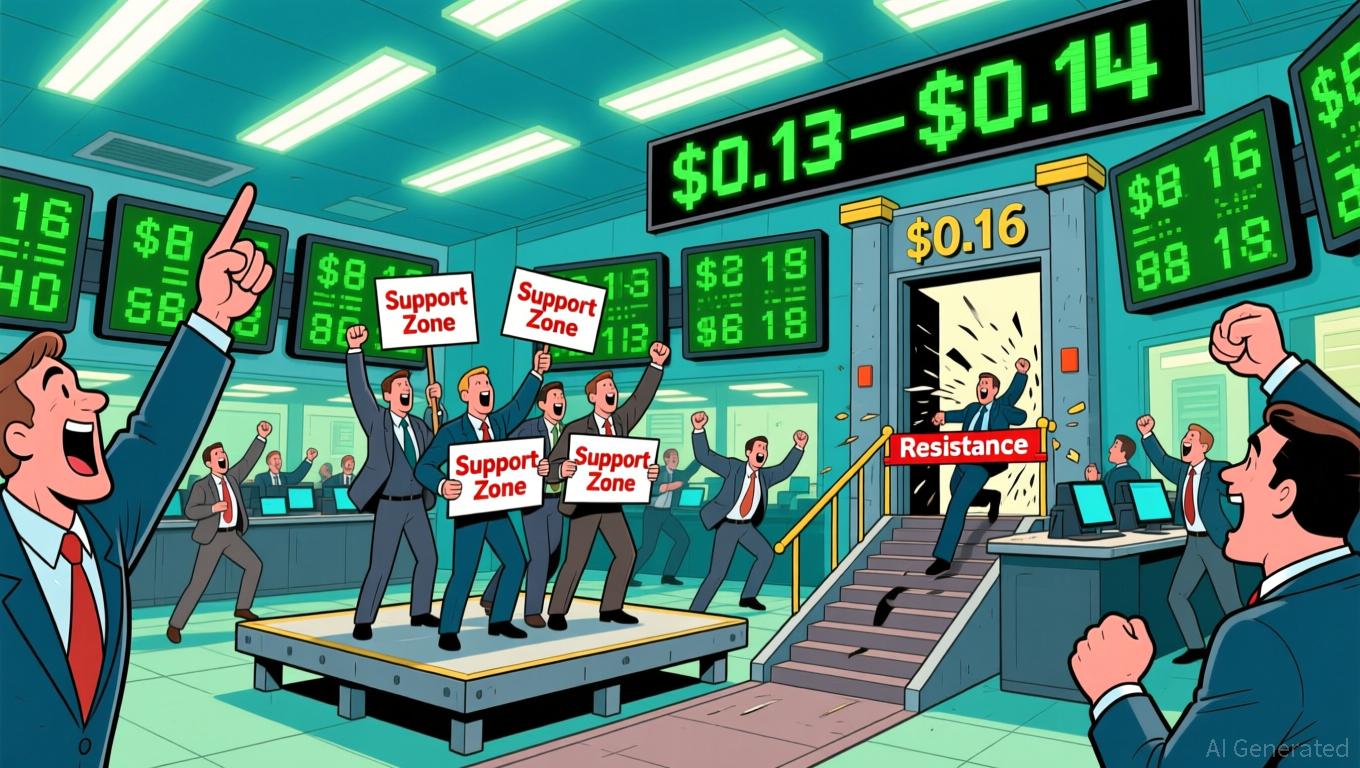Strategic Collaborations Between Public and Private Sectors: Driving Real Estate and Industrial Expansion in Underdeveloped Areas
- Public-private partnerships (PPPs) are transforming underserved regions by bridging infrastructure gaps and driving real estate and industrial growth. - Projects like Madrid Nuevo Norte and Costa Rica's affordable housing initiatives demonstrate PPPs' ability to boost property values and create jobs through mixed-use development and public land utilization. - U.S. data reveals racial disparities in PPP benefits, with communities of color experiencing lower baseline home values despite similar growth rate
Public-Private Partnerships: Revitalizing Underserved Regions
As infrastructure ages and economic growth remains uneven, public-private partnerships (PPPs) are playing a pivotal role in transforming regions that have historically lacked investment. These collaborations combine the strengths of government resources and private sector expertise, paving the way for significant advancements in both real estate and industrial sectors. By breathing new life into city centers and generating employment in industrial districts, PPPs are reshaping the landscape of infrastructure investment and fostering sustainable economic growth.
Revamping Real Estate: Turning Neglected Areas into Thriving Hubs
PPPs are making a substantial impact on real estate in underserved communities by tackling infrastructure gaps. A prime example is the Madrid Nuevo Norte Project (MNNP), a leading urban renewal effort. Through the integration of climate-adaptive planning, enhanced public transportation, and mixed-use spaces, this initiative has boosted property values and attracted private capital to previously overlooked neighborhoods.
This approach extends beyond Europe. In Costa Rica, PPPs have utilized public land to develop affordable, professionally managed rental housing, resulting in a 25.5% surge in multifamily housing construction in semi-urban regions from 2013 to 2023.

Similar patterns are evident in the United States. In Gateway Cities, predominantly minority neighborhoods experienced a 20% increase in home values between 2022 and 2024, paralleling trends in majority-White areas. However, initial property values in communities of color remain lower, emphasizing the necessity for equitable policies to ensure PPPs contribute to closing, rather than widening, the wealth gap.
Industrial Growth: Driving Economic Diversification
Industrial areas in underserved locations are also reaping the benefits of PPP-led improvements. Across Latin America and the Caribbean, the Inter-American Development Bank has facilitated more than 50 PPP projects, channeling $18 billion into sectors such as transportation and sanitation. In Peru, 139 PPP initiatives valued at $36 billion have become models for job creation and improved access to vital services.
In the United States, the Bipartisan Infrastructure Law has fueled a 7.3% annual rise in infrastructure-related jobs through the third quarter of 2025, backed by $1 trillion in combined public and private investment. Programs like California’s Resilient East Bay are transforming industrial land into centers for advanced manufacturing and technology, supported by federal funding. The U.S. PPP market is forecasted to expand from $34.8 billion in 2024 to $61.4 billion by 2032, reflecting a compound annual growth rate of 7.5%.
Measuring Success: Assessing the Impact of PPPs
The benefits of PPPs are increasingly quantifiable. In Turkey, the $244 million Elazig hospital project is upgrading healthcare facilities, which is essential for supporting a productive industrial workforce. Globally, private participation in infrastructure reached $86 billion in 2023, with transportation and energy leading the way. Supportive regulatory environments are also crucial; according to the World Bank, favorable policies can increase PPP investment by as much as $488 million.
In real estate, Florida’s PortMiami Tunnel project illustrates how improved infrastructure can enhance trade and boost property values. On the industrial side, the East Bay Economic Development Alliance is working to transform Contra Costa County’s Northern Waterfront into a center for sustainable manufacturing through its Green Empowerment Zone initiative.
Overcoming Obstacles: Ensuring Inclusive and Sustainable Growth
Despite their promise, PPPs encounter several challenges. The uneven allocation of benefits, as seen in disparities in U.S. federal funding, and the growing demand for advanced skills in infrastructure jobs highlight the importance of designing inclusive programs. Additionally, clear regulations and effective risk-sharing frameworks are vital for replicating successful PPP models on a larger scale.
Looking Ahead
Well-structured PPPs are proving to be more than just financing tools—they are engines for inclusive and sustainable development. By aligning infrastructure, real estate, and industrial strategies, these partnerships are unlocking potential in areas that have long been overlooked. For investors, the message is clear: with the support of PPPs, underserved markets present not only attractive returns but also the opportunity to address some of today’s most urgent challenges.
Disclaimer: The content of this article solely reflects the author's opinion and does not represent the platform in any capacity. This article is not intended to serve as a reference for making investment decisions.
You may also like
Bitcoin News Update: S&P Rating Drop Highlights Tether’s Risky Asset Holdings and Lack of Transparency
- S&P downgrades Tether's USDT to "5 (weak)" due to high-risk reserves and transparency gaps. - Tether's 5.6% BTC exposure exceeds overcollateralization margins, risking undercollateralization if prices drop. - CEO dismisses critique as traditional finance bias, claiming no "toxic" assets in reserves. - Regulators intensify scrutiny as stablecoin centralization risks emerge amid $184B USDT circulation. - S&P urges Tether to reduce risky assets and enhance reserve disclosure to rebuild trust.

Dogecoin Latest Updates: Is a Repeat Performance on the Horizon? Holding $0.15 May Signal a 611% Rally for Dogecoin
- Dogecoin (DOGE) stabilized near $0.15 support, triggering historical 611% rally potential to $1 by 2026. - Grayscale's GDOG ETF and pending Bitwise BWOW ETF mark institutional adoption, though initial inflows remain muted. - Technical indicators show mixed momentum with RSI near oversold levels and key resistance at $0.16. - Market remains divided as ETF-driven liquidity and on-chain infrastructure contrast with macroeconomic and regulatory risks.

Turkmenistan’s Approach to Cryptocurrency: Centralized Oversight Amidst a Decentralized Age
- Turkmenistan legalizes crypto trading under strict 2026 regulations, granting state control over exchanges, mining , and custodial services. - Law mandates KYC/AML compliance, bans traditional banks from crypto services, and classifies digital assets into "backed" and "unbacked" categories. - Central bank gains authority to operate state-monitored distributed ledgers, contrasting with decentralized approaches in South Korea and Bhutan. - Framework aims to balance innovation with oversight, testing Turkme
Bitcoin News Update: Has $162 Billion Left Crypto Due to Institutional Buying or a Broader Market Pullback?
- BlackRock deposited 4,198 BTC and 43,237 ETH into Coinbase amid crypto sell-offs, despite $355.5M Bitcoin ETF outflows. - A 1.8M BTC ($162B) overnight exchange withdrawal sparks speculation about institutional accumulation or portfolio rebalancing. - $40B in BTC/ETH exchange inflows and record $51.1B Binance stablecoin reserves highlight institutional demand for regulated crypto products. - On-chain data shows 45% of large deposits (≥100 BTC) and 1.8M BTC withdrawals, indicating mixed market sentiment ah
